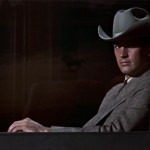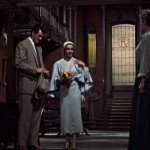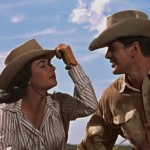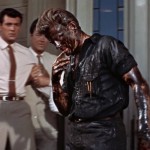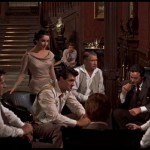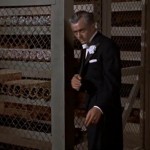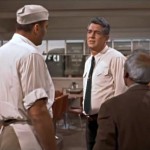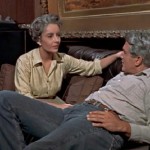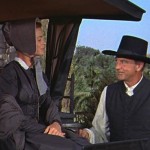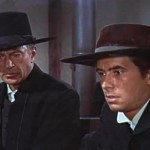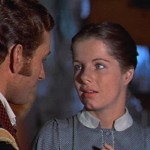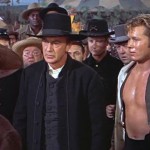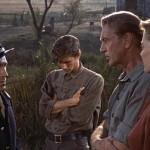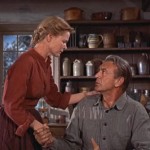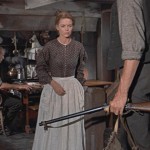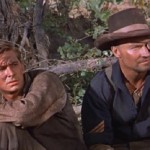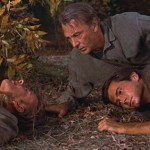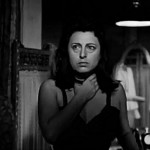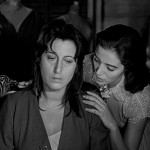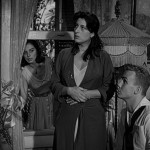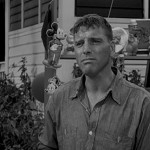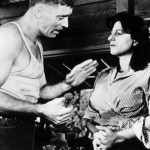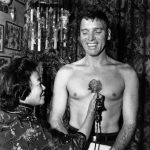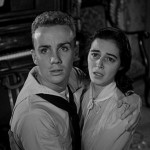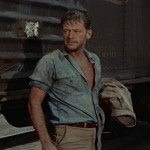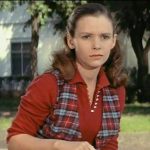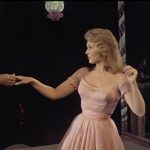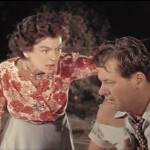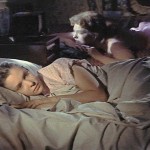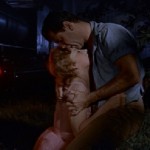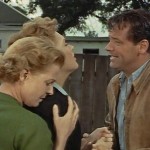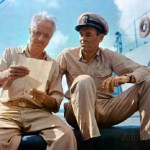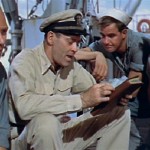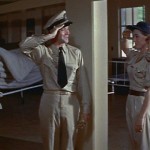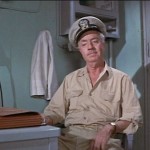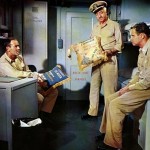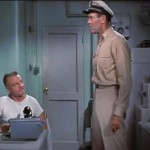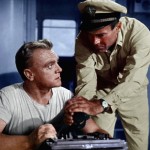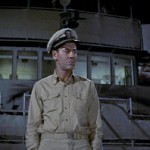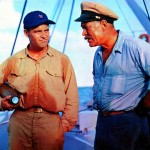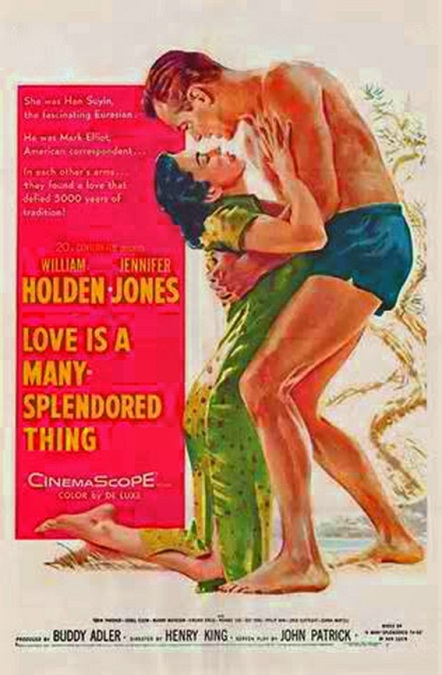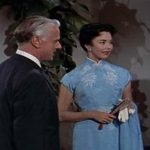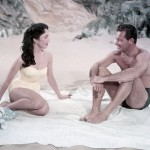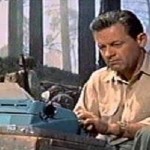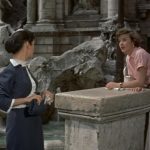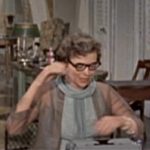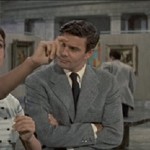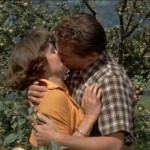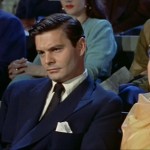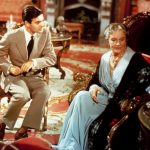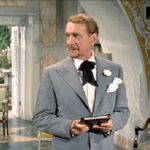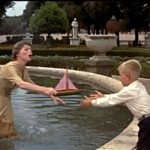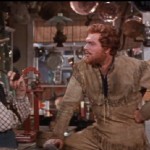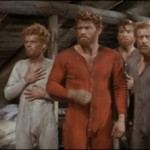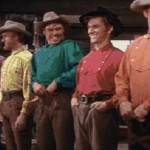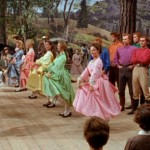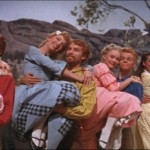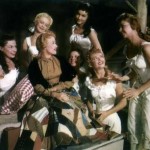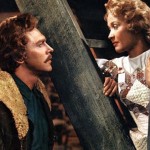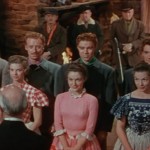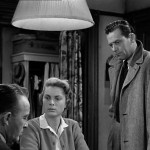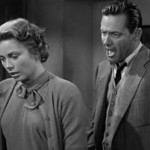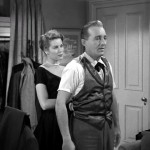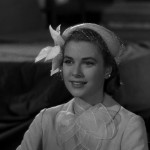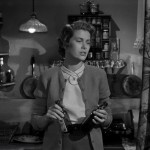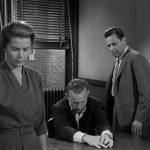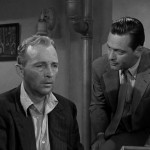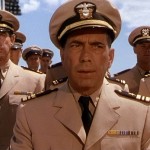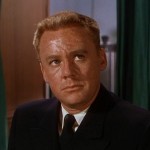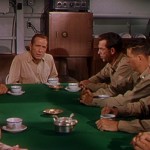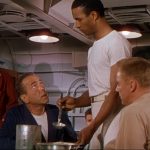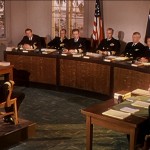
Giant – 1956
Giant was a huge epic, and I do enjoy epics. As most epics it follows the happenings of a group of characters over a long period of time. It dealt with large, grand issues and did so in a very socially conscious way. The three leads were each Hollywood legends in their own rights. Rock Hudson played Jordan “Bick” Benedict Jr., a powerful land owner and cattle rancher in Texas. He later becomes a wealthy oil baron. His intelligent and opinionated wife Leslie was played by Elizabeth Taylor. And in his third and final movie role, James Dean played ranch-hand-turned-rich, Jett Rink.
The acting was very good on all sides. I have never been a huge Rock Hudson fan, but I thought he did a great job. True, I didn’t particularly like his character until the end, but he played it well. And the fact that he was an unlikable character until he had a change of attitude near the end of the movie was even addressed as part of the plot.
Taylor also did a remarkable job, as one of the films themes was the role of women in a male dominated society. She was a strong and articulate character who hated being treated like a dumb woman. She was opinionated and was angered when she wasn’t even allowed to listen to the men discuss business and politics. But she was like the glue that held the fracturing Benedict family together.
Now, I’m going to give an unpopular opinion about James Dean. He did a fine and competent job, but based on his performance, I don’t see what all the fuss is about. He is always hailed as a Hollywood legend, and while he was able to keep up with Hudson and Taylor, I don’t think he surpassed them. Had he lived to make any more films, I think he would have had an accomplished career, but I don’t find his performance any better or more captivating because he happened to have died mere days after filming wrapped. He is often listed among other Hollywood greats like Marlon Brando and Marilyn Monroe, but why? Sure Monroe also died young, but she was in many more films, and when she was on the screen, she was mesmerizing. And Brando had a very long and illustrious career. Ok, ‘nuff said about that.
I would say that the dominant theme of the movie was prejudice, in this case, the obvious discrimination of Mexican Americans. The film actually did a wonderful job of displaying how horribly they were treated. They were segregated, and looked upon as second-class citizens. The movie didn’t shy away from the terrible slur, “wetbacks” and even the film’s dramatic climax couldn’t completely erase the term from Bick’s vocabulary.
The film actually looked at the discrimination from a number of different angles. There is a sequence where several of the younger generation had to go to war, and the only one who died was the Mexican American boy. One of the three children, Jordan Benedict III, played by Dennis Hopper, gets married to a Latina woman and has a child that is clearly of Mexican descent. In fact, it is they that cause Bick’s change in attitude toward the racial minority. He gets into a brawl with the owner of a diner because he refuses service to a Mexican family who he does not know.
The film’s other real conflict, aside from changing times, independent children, and outdated attitudes, was Bick’s long-standing rivalry with Jett. Jett was one of Bick’s ranch-hands who was a racist and a jerk. He lucked into a small piece of land that happened to contain millions of dollars in crude oil, but his subsequent riches just made him more and more unpleasant. He became a self-destructive alcoholic with no friends. His final pathetic scene, where he passes out in front of a posh banquet being given at the opening of his airport/hotel, was poignant to watch.
Just as a point of interest, I learned that this big drunken scene was very nearly ruined because of Dean’s extreme method acting. To be a more convincing drunk, Dean showed up on the set three sheets to the wind. Unfortunately, his lines were so slurred and mumbled that they could not be understood. Tragically, he died before he could over-dub his own lines, and another member of the cast, Nick Adams, had to do it for him. Dean, you are an actor. You’re supposed to ACT drunk, not BE drunk. Despite this, Dean was posthumously nominated for Best Actor at the Academy Awards.
